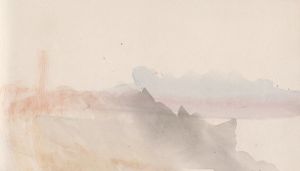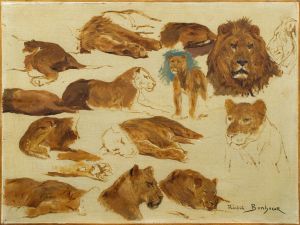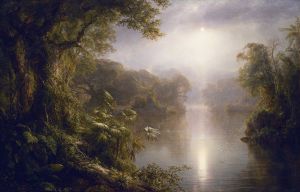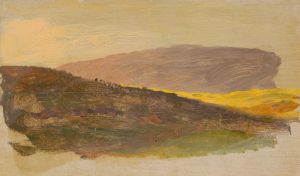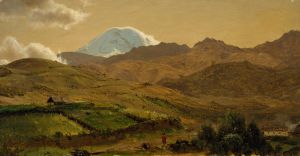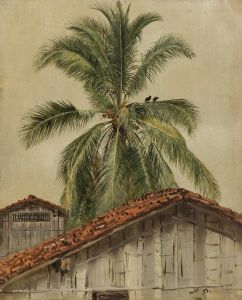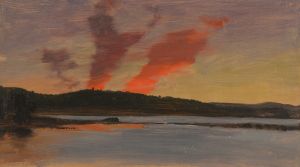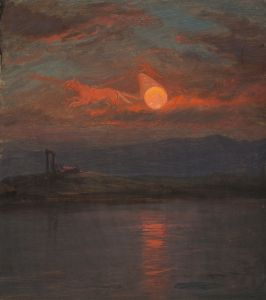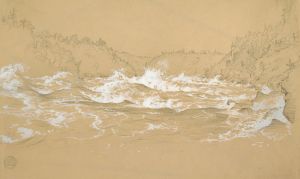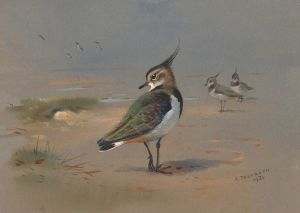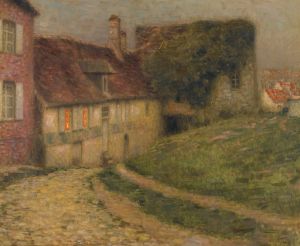
Study for ‘Imaginary S. American Landscape’
A hand-painted replica of Frederic Edwin Church’s masterpiece Study for ‘Imaginary S. American Landscape’, meticulously crafted by professional artists to capture the true essence of the original. Each piece is created with museum-quality canvas and rare mineral pigments, carefully painted by experienced artists with delicate brushstrokes and rich, layered colors to perfectly recreate the texture of the original artwork. Unlike machine-printed reproductions, this hand-painted version brings the painting to life, infused with the artist’s emotions and skill in every stroke. Whether for personal collection or home decoration, it instantly elevates the artistic atmosphere of any space.
Frederic Edwin Church, an eminent American landscape painter and a central figure in the Hudson River School, is renowned for his grand and detailed depictions of natural scenes. One of his intriguing works is "Study for ‘Imaginary S. American Landscape’," which reflects his fascination with the exotic and the sublime in nature. This study is part of Church's broader exploration of South American landscapes, inspired by his travels and the scientific expeditions of the time.
Church was deeply influenced by the writings and explorations of the German naturalist Alexander von Humboldt, who traveled extensively in South America. Humboldt's work emphasized the interconnectedness of nature and the diversity of the natural world, themes that resonated with Church and are evident in his paintings. Church's journey to South America in the late 1850s, particularly to Colombia and Ecuador, provided him with firsthand experience of the landscapes that Humboldt had described. These travels were pivotal in shaping his artistic vision and contributed to the authenticity and detail in his works.
"Study for ‘Imaginary S. American Landscape’" is a preparatory work that showcases Church's meticulous approach to capturing the essence of the South American environment. Although the study itself is not as widely recognized as some of his larger, finished canvases, it is significant in understanding Church's process and his ability to synthesize real and imagined elements into cohesive compositions. The study likely served as a conceptual exploration, allowing Church to experiment with composition, light, and color before committing to a larger piece.
Church's studies often included detailed observations of flora, fauna, and geological formations, reflecting his commitment to scientific accuracy and artistic beauty. This approach was characteristic of the Hudson River School, which sought to depict the American landscape with a sense of grandeur and reverence. In the case of his South American studies, Church combined his observations with an imaginative interpretation, creating landscapes that, while based on real locations, also conveyed a sense of the mythical and the sublime.
The "Imaginary S. American Landscape" studies are part of a broader body of work that includes some of Church's most famous paintings, such as "The Heart of the Andes" and "Cotopaxi." These works were celebrated for their dramatic use of light and shadow, their intricate detail, and their ability to evoke the awe-inspiring power of nature. Church's South American landscapes were not only artistic achievements but also cultural events, drawing large audiences and critical acclaim when exhibited.
In summary, "Study for ‘Imaginary S. American Landscape’" by Frederic Edwin Church is a testament to the artist's skill in blending observation with imagination. It reflects his deep engagement with the natural world and his ability to convey its beauty and complexity through art. While the study itself may not be as prominent as some of his completed works, it is an essential piece in understanding Church's artistic journey and his contribution to American landscape painting.






